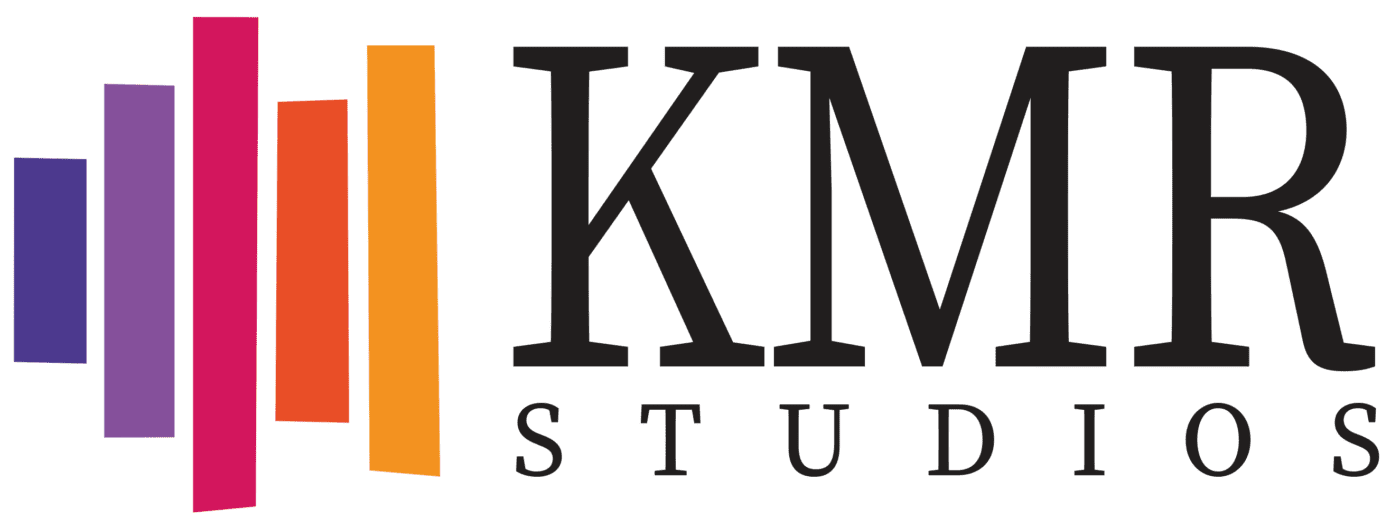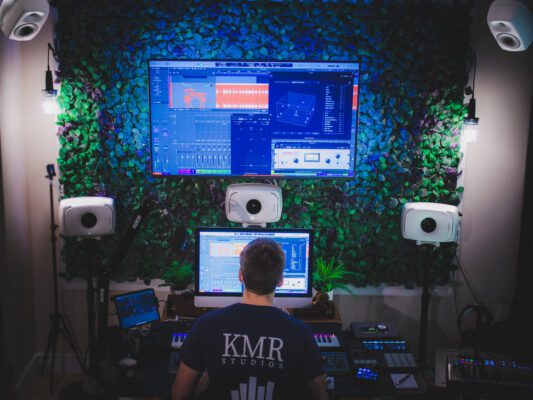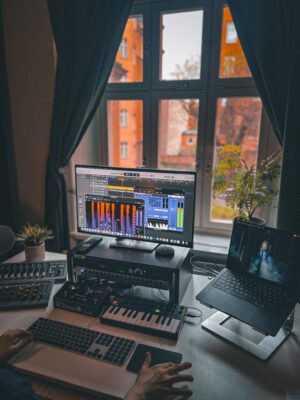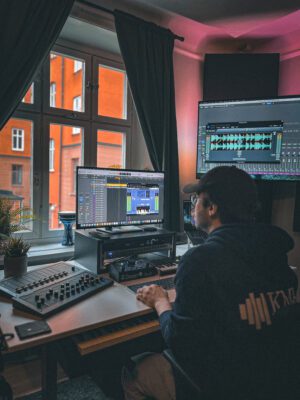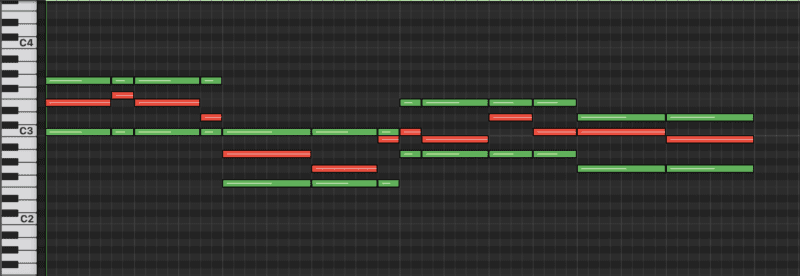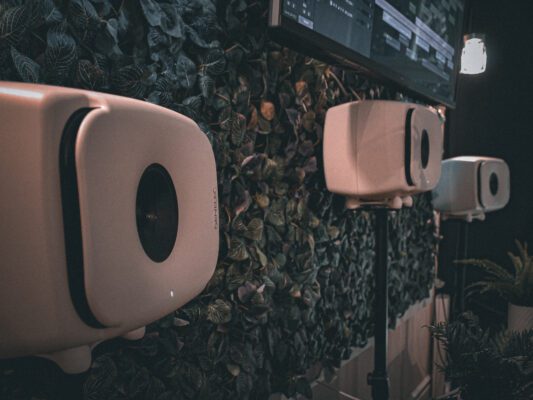What is a reverb?
Before we delve into different types of reverb, it’s good to know what it is. Reverb is an effect that simulates the reflections in a room and creates a sense of space and openness. Recording studios often make the recorded material sound dry and confined due to the lack of natural reverb in the room. However, this gives us control over the material because we can add artificial reverb exactly the way we want it later on.
Different types of reverb
In this guide, we will go through the most common types of reverb and explain how they work and are used.
Echo Chamber
The first artificial reverb is known as “chamber reverb”. This was developed during the 1930s and 1940s but is still popular today. A technician sends the signal from the mixing console to a specially designed room called an “echo chamber”. Here the sound is played through speakers, bounces off the walls, and is then picked up by one or more microphones. Echo chambers come in different sizes and shapes, with walls made of different materials.
This type of reverb has a very noticeable effect that decays slowly without washing out the original signal too much. It creates an unbalanced tone that often requires further filtering and EQ. The use of echo chambers is common in recordings from the 1950s and 1960s.
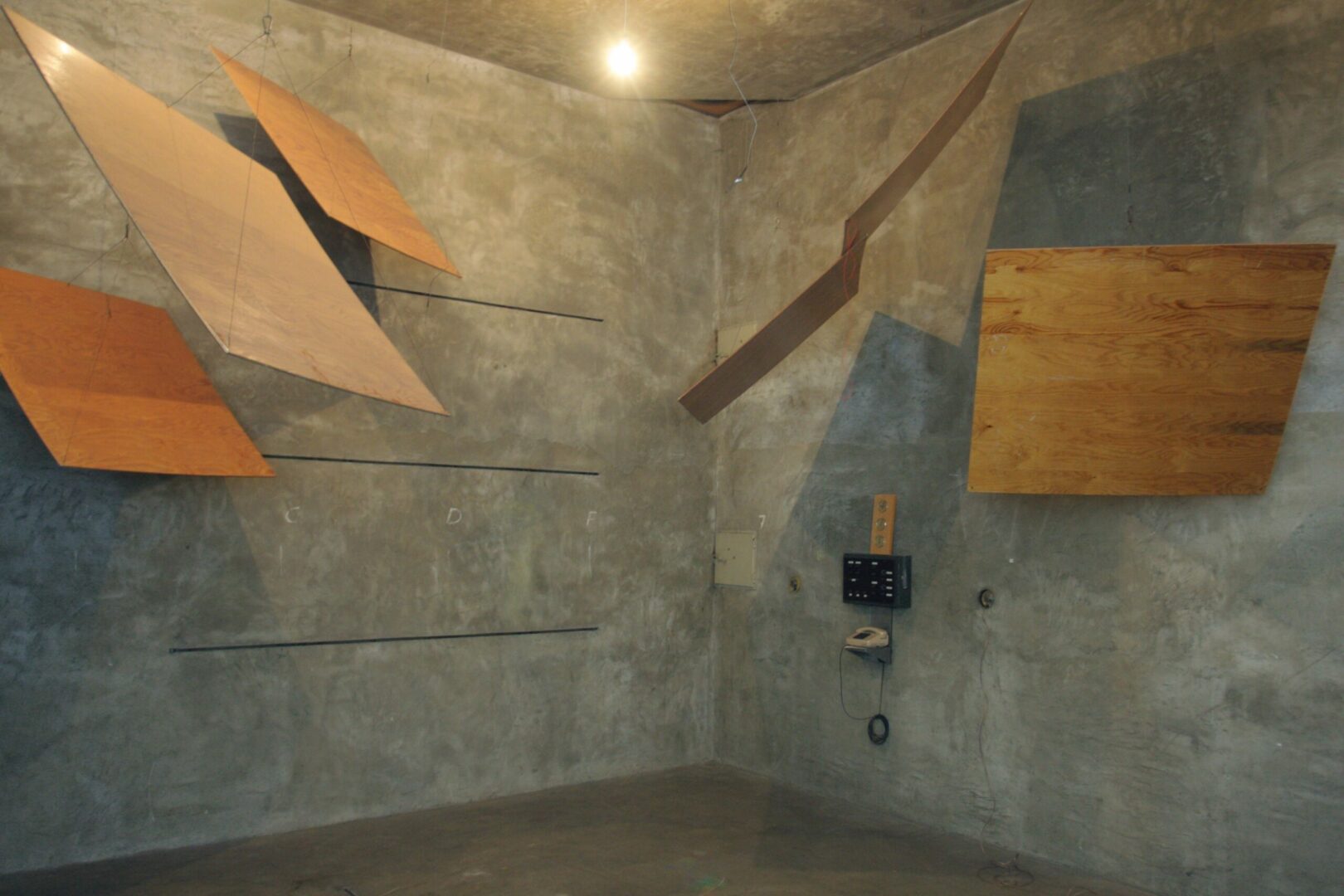
An Echo Chamber
Plate Reverb
Not everyone can build their own echo chamber, so a new solution emerged: the EMT 140 Plate Reverb from 1957. It is a large box weighing almost a quarter of a ton. This box contains a metal plate connected to an electromagnetic transducer that converts the electrical signal into vibrations. The plate vibrates, and on each side, there are pickups (similar to those found on guitars). These convert the plate’s vibrations back into electrical signals.
Plate reverbs have a clear and smooth sound that can enhance the presence of both vocals and instruments, even though it doesn’t sound like a natural room. The unit has controls that change the width of the reverb and the length of the decay by blending the dry and artificial signals.
A popular technique is to turn up the decay to the maximum and then dial down the blend almost completely. This gives you a small but constant amount of reverb that suits vocals or guitars. However, it’s easy to wash out a sound with this type of reverb, so be careful not to turn it up too much. Many plugins allow you to increase the decay more than was possible with hardware. We feel that “less is more” when it comes to plate reverb.
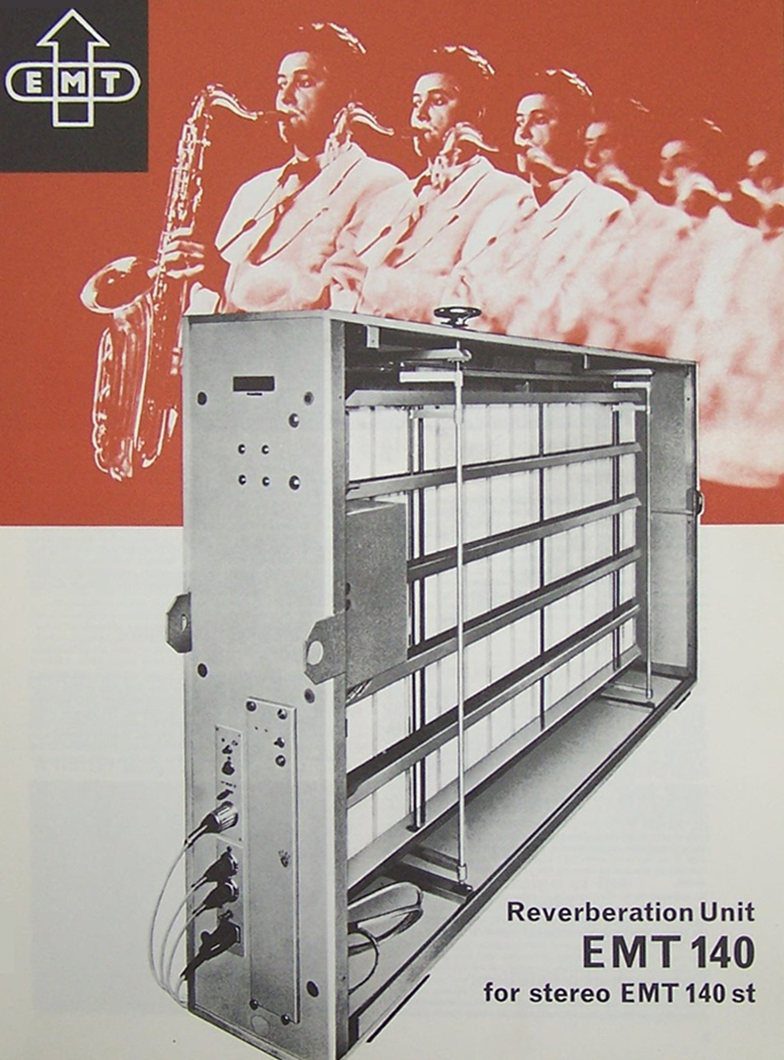
Plate Reverb
EMT 140
Spring Reverb
Spring reverb is similar to plate reverb but much smaller. This is because instead of the metal plate, it uses coiled springs connected to the transducer and pickup. This allows the unit to fit into a much smaller container. However, the length of the springs can vary from a few centimeters to a meter.
Spring reverb has a very distinctive behavior during transients (e.g., handclaps) as the springs produce a “boing” sound. Therefore, this type of reverb does not work particularly well on drums. However, it may work well on electric guitar when picking, as it can enhance groove and rhythm. Spring reverb adds presence and dimension to instruments but still doesn’t sound like a real room.
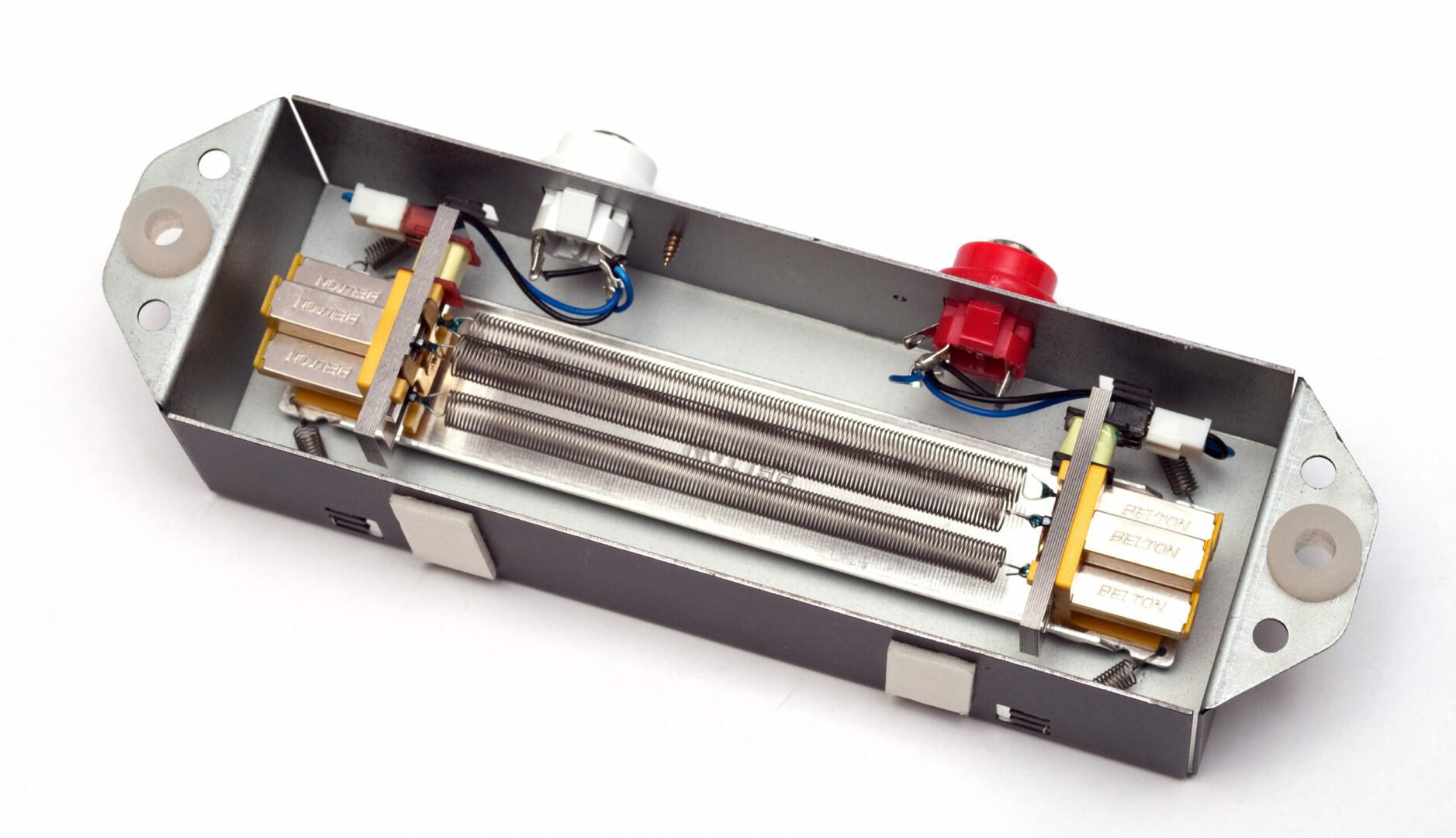
Spring Reverb
Digital/Algorithmic Reverb
In the 1970s, technology began to change rapidly with the development of digital/algorithmic reverb. Some of the most famous hardware units from that time are the Lexicon 224 and EMT 250, but now there are also similar plugins available. These work by stacking multiple copies of the original source’s reverberation (“tail”) to create the illusion of depth and space. They often come with a dozen effects that allow you to modify the reverb. This can mean changing the early reflection, which is the first thing you would hear in a natural environment.
Digital/algorithmic reverb provides a more controlled and balanced sound than a real room. One of its features is “hall reverb,” which is designed with acoustics in mind, unlike room reverb. It sounds balanced and natural, which may not suit all mixing situations. However, on some acoustic instruments, a small amount of hall reverb can sound fantastic. There are also reverse reverb and several other features that create atmospheres not possible in a natural room.
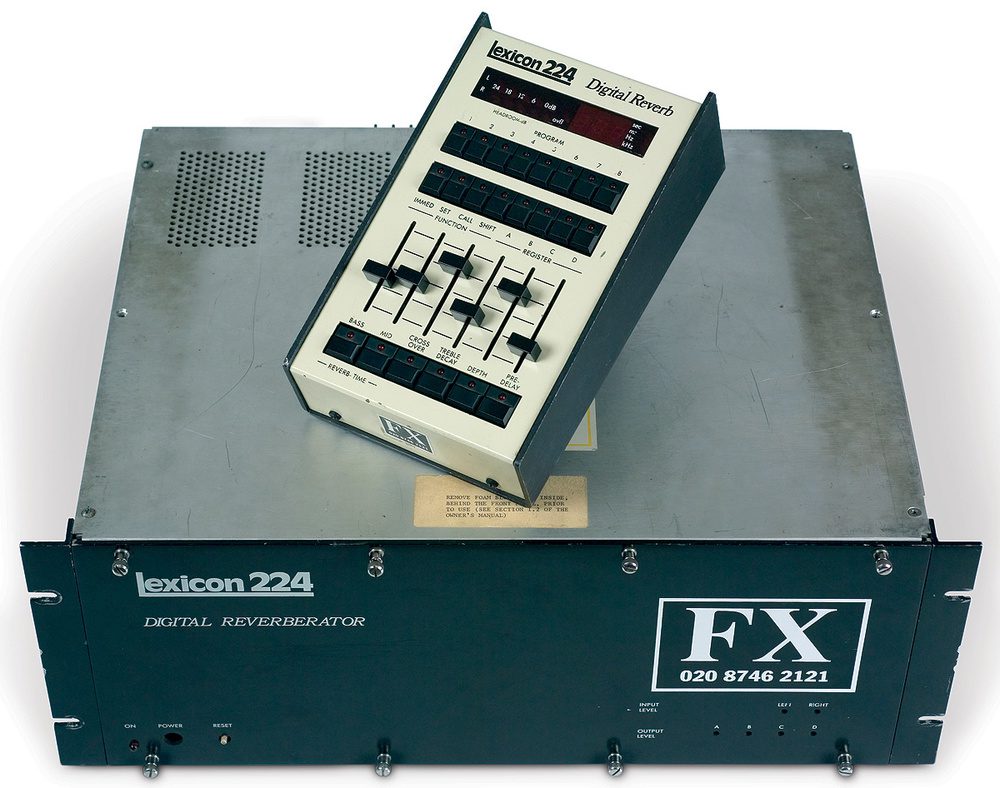
Digital Reverb
Lexicon 224
Algorithmic reverbs have nearly perfect emulations of real spaces and other units. They are also highly adjustable and offer many different effects. Modern plugins have relatively low CPU and RAM requirements, so you can have several types of reverb in the same project.
Convolution Reverb
Convolution reverb is a type of algorithmic reverb that uses impulse responses to capture the sound of a space or another reverberation unit. This is done by playing a short impulse response in the space and running the response through the unit to listen and capture the result with a microphone. These impulses are not pleasant to listen to by themselves. However, when the processor combines them with the original recording, you get a perfect recreation of the space or unit.
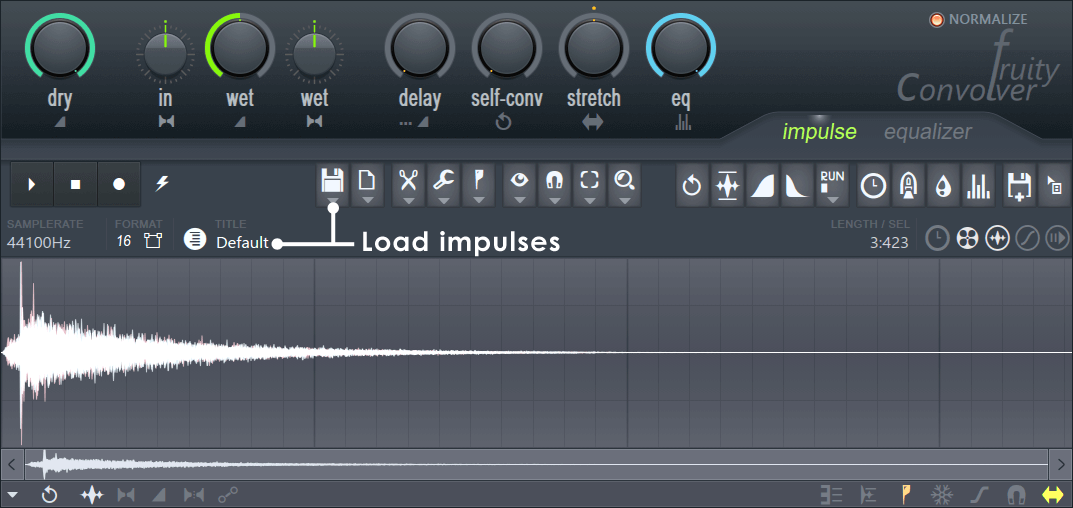
Convolution Reverb
Fruity Convolver
There are thousands of impulse responses available as many people record their vintage hardware or impulse responses in different spaces and share them for free. All you need to do is upload the impulse response into your chosen plugin. One drawback is that convolution reverbs often require a bit more CPU and much more RAM, as you need space to store all the impulse responses. But for many, this is not a problem as storage space and processing power only improve every year.
We hope this guide was helpful to those who want to learn more about different types of reverb. If you have more questions, feel free to contact us! You can also read more about different types of compressors.
Guides
What is a clipper?
Have you started out in the world of mixing and mastering and just came across [...]
5 Clippers taking your mix to new heights
Are you not sure what Clipper to use when mixing and mastering your music? We [...]
Mastering Vocal Harmonies
Read more about what strategies you could use to learn more about, and eventually master, [...]
Export master files from Atmos projects in Logic Pro
This article gives you detailed information on how to export master files from Logic Pro [...]
Contact us

CONTACT US
OUR PORTFOLIO
Over the past few years, KMR Studios has released hundreds of songs by a wide range of artists. To make it easier for you to find what you’re looking for, we’ve organized the music into various playlists. Click the link below to explore our music by format (stereo or Dolby Atmos) or genre.
Portfolio
 Svenska
Svenska